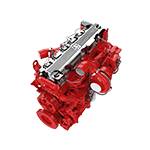Nov . 27, 2024 02:52 Back to list
Tips for Effective Brake Drum Repair and Maintenance Techniques
Brake Drum Repair Ensuring Safety and Performance
Brake systems are a critical component of any vehicle, serving as the primary means of deceleration and stopping. Among the various parts of the braking system, brake drums play an essential role, particularly in drum brake systems. Proper maintenance and timely repair of these components are vital to ensure optimal performance and safety. This article delves into the importance of brake drum repair, common issues, signs of wear, and the repair process itself.
Understanding Brake Drums
Brake drums are circular metal components that house the brake shoes. When the driver presses the brake pedal, hydraulic pressure is generated, pushing the brake shoes against the inner surface of the drum. This friction slows down the vehicle. While modern vehicles may use disc brakes, many still rely on brake drums, especially in rear brake systems.
Why Brake Drum Repair is Important
1. Safety Worn or damaged brake drums can lead to decreased braking efficiency, which can be dangerous. In emergency situations, compromised brakes may not respond adequately, increasing the risk of accidents.
2. Cost-Effectiveness Regular maintenance and timely repairs can save money in the long run. Neglecting small issues can lead to more significant and expensive problems, requiring complete brake assembly replacements or other costly repairs.
3. Enhanced Performance Well-maintained brake drums ensure better contact with brake shoes, providing smoother and more effective braking. This performance improvement can enhance driving comfort and vehicle handling.
Common Issues with Brake Drums
1. Warping Overheating can cause brake drums to warp, leading to uneven surfaces. Warped drums can produce vibrations and affect the overall braking performance.
2. Cracking Excessive wear and overheating can lead to cracks in the drum material. Cracked drums pose a severe safety risk, as they can fail during operation.
3. Rust and Corrosion Brake drums are exposed to various elements, including moisture. Over time, this exposure can lead to rust and corrosion, compromising the integrity of the drum and, consequently, the braking ability.
4. Worn Shoes Sometimes the issue lies not with the drum itself but with the brake shoes. Worn shoes can lead to uneven wear on the drum surface, necessitating repairs.
brake drum repair

Signs That Brake Drum Repair is Needed
- Unusual Noises If you hear grinding, squeaking, or screeching sounds when braking, this may indicate wear on the brake shoes or issues with the drum itself. - Vibration or Pulsation A pulsating sensation in the brake pedal when you apply the brakes often suggests warped drums.
- Reduced Responsiveness If you notice a longer stopping distance or if the brakes feel less responsive, it could point to a problem with the brake drums.
- Visible Damage Inspecting the drums can reveal visible issues such as cracks or significant rust. If you can see damage, it’s time for a repair.
The Brake Drum Repair Process
1. Inspection A thorough inspection of the brake system starts with the removal of the wheel and brakes. Technicians assess the condition of the brake drum, shoes, and other components.
2. Cleaning Brake components are cleaned to remove dust, dirt, and debris. This step is essential for a clear inspection and proper function.
3. Turning the Drums If the drums are slightly warped or worn, they may be able to be resurfaced, also known as turned, on a brake lathe. This process involves removing a thin layer of metal to create a smooth, even surface.
4. Replacing Components In cases where the drums are cracked or excessively worn, new brake drums may need to be installed. Additionally, worn brake shoes should be replaced.
5. Reassembly and Testing Once repairs are completed, all components are reassembled, and the brake system is tested to ensure proper functionality.
Conclusion
Brake drum repair is a vital aspect of vehicle maintenance that ensures safety, efficiency, and performance. By being aware of the signs of wear and understanding the importance of timely repairs, vehicle owners can avoid serious safety issues and maintain their vehicles in top condition. Regular inspections and proper care of the brake system will go a long way in ensuring a safe driving experience. Whether through DIY repair or professional service, prioritizing brake maintenance is crucial for every driver.
-
Scania Brake Drums: OEM Quality for Optimal Safety & Durability
NewsAug.16,2025
-
R.V.I: Advanced Remote Visual Inspection for Precision
NewsAug.15,2025
-
Discover HYUNDA: Innovative Vehicles, Equipment & Solutions
NewsAug.14,2025
-
R.V.I: Unlock Advanced Insights & Real-time Performance
NewsAug.13,2025
-
Kamaz Brake Drum: Durable & Reliable for Heavy Duty Trucks
NewsAug.12,2025
-
Heavy Duty Iveco Brake Drum - Premium Quality & Safety
NewsAug.11,2025
